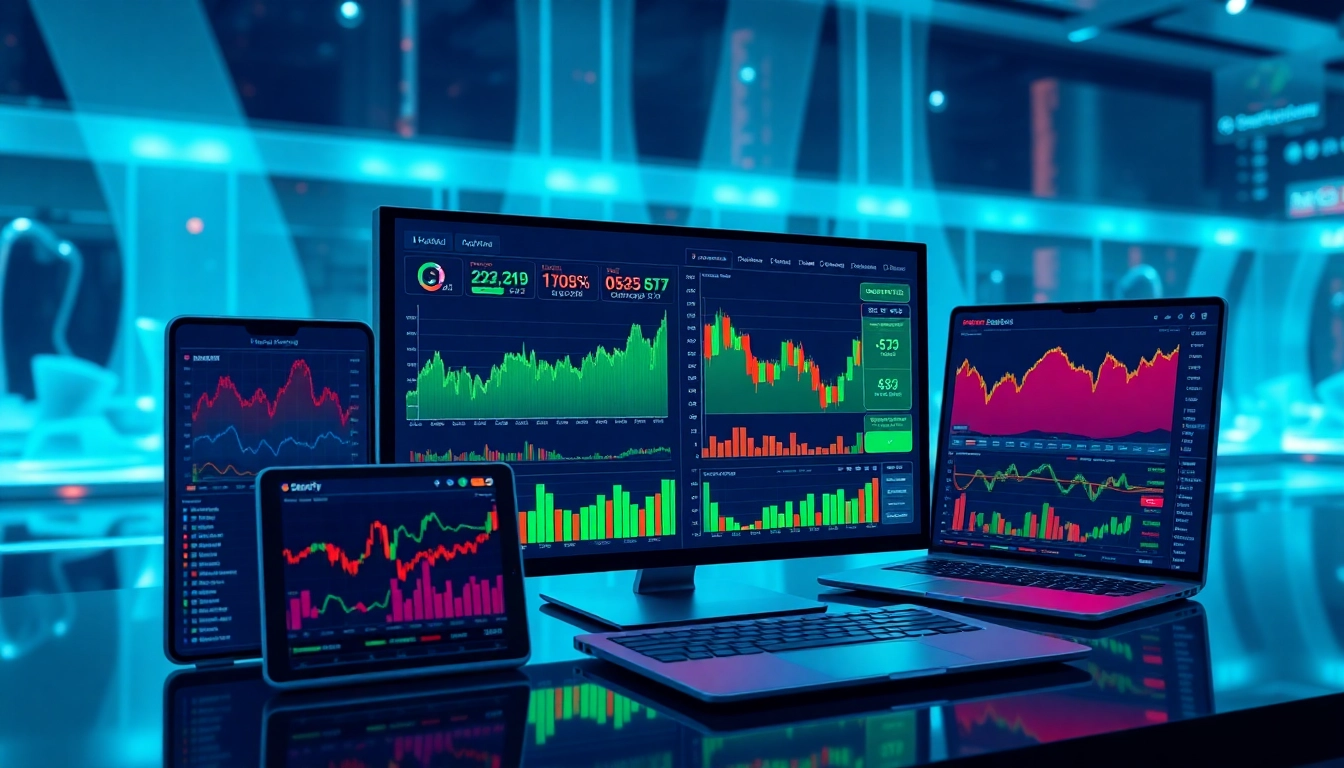1. Defining Technology
1.1 What is Technology?
At its core, technology is the application of scientific knowledge for practical purposes. It encompasses a wide array of tools, systems, and methods designed to solve problems and improve the quality of life. In essence, technology allows humans to harness and manipulate the natural world to innovate and create solutions. This broad definition encompasses devices, systems, software, infrastructure, and even processes that have a profound impact on our daily lives and work environments.
1.2 Historical Evolution of Technology
The history of technology is as old as humanity itself. Early man utilized simple tools made from stone and wood, marking the beginning of technological innovation. As societies evolved, so did technology; the agricultural revolution brought advances such as the plow and irrigation systems, which drastically improved food production. The Industrial Revolution marked a pivotal moment with the advent of machines and engines that transformed manufacturing processes and socioeconomic structures. Issues like mass production, urbanization, and the rise of factory-based economies defined this era.
In the 20th century, we witnessed the development of the digital age, marked by the introduction of computers, the internet, and mobile devices. Innovations in these areas have redefined communication, information sharing, and commerce. Present-day technology continues to evolve rapidly, with artificial intelligence, biotechnology, and nanotechnology driving the next wave of advancements.
1.3 The Importance of Technology in Daily Life
Today, technology permeates every aspect of our lives. From how we communicate with friends and family to how we work and learn, technology shapes our experiences. In education, online learning platforms and digital resources have made knowledge more accessible than ever. In healthcare, advanced medical equipment and telemedicine have revolutionized patient care, allowing for remote diagnostics and treatments, especially crucial in recent years during global health crises.
Moreover, technology has significantly impacted transportation, making travel faster and more efficient. Electric vehicles and ridesharing apps exemplify how technology is reshaping mobility. In the home, smart devices enhance convenience, security, and energy efficiency, showcasing the indispensable role of technology in enhancing our everyday existence.
2. Types of Technology
2.1 Information Technology: A Comprehensive Overview
Information technology (IT) refers to systems and tools used to collect, store, and process data. It encompasses hardware like computers and servers, software applications, databases, and networks. The field of IT has grown exponentially, becoming integral to nearly all industries. IT is pivotal in enabling businesses to operate efficiently, manage customer relations, and make strategic decisions based on data analysis.
Moreover, the rise of cloud computing has transformed IT, allowing businesses to store and access data remotely, reduce infrastructure costs, and improve collaboration. Cybersecurity has emerged as a critical component, safeguarding data integrity and privacy in an increasingly digital world.
2.2 Emerging Technologies Shaping the Future
Emerging technologies are those that are currently being developed and are expected to experience significant growth and impact in the near future. Notable examples include:
- Artificial Intelligence (AI): AI enhances decision-making processes and automates complex tasks across industries like healthcare and finance.
- Internet of Things (IoT): IoT enables connectivity among devices, enhancing automation in homes and industries through smart technology.
- Blockchain: Originally created for cryptocurrency, blockchain technology is now being adapted for secure transactions in finance, supply chains, and more.
- Biotechnology and Genetic Engineering: These fields are revolutionizing medicine and agriculture through genetic modifications and synthetic biology.
- Renewable Energy Technologies: Innovations in solar, wind, and battery storage aim to create sustainable, eco-friendly energy solutions.
2.3 Everyday Technologies and Their Functions
Everyday technologies refer to the devices and systems that enhance our daily life by making tasks easier and improving efficiency. These include:
- Smartphones: These versatile devices have transformed communication, access to information, and social interaction.
- Home Automation Systems: Smart thermostats, locks, and lighting offer convenience, efficiency, and security to modern households.
- Wearable Technology: Devices like fitness trackers and smartwatches monitor health metrics, helping users stay informed about their well-being.
- Streaming Services: Platforms such as Netflix and Spotify have changed how we consume media, providing instant access to entertainment.
3. The Role of Technology in Business
3.1 Technology Adoption in Modern Enterprises
Businesses today cannot thrive without adopting technology; it serves as the backbone for operations and growth. From startups to large corporations, leveraging technology enhances productivity, improves customer experiences, and ultimately drives profitability. The process of technology adoption often begins with identifying pain points, researching potential solutions, and implementing systems that streamline operations.
Successful technology integration requires a cultural shift within the organization—a commitment to innovation, continuous learning, and agility to adapt to new tools and processes. Leadership plays an essential role in advocating for technology use and supporting employees through training and resources.
3.2 Enhancing Efficiency through Technology
Efficiency is arguably one of the greatest benefits of employing technology in business. Technologies like automation, analytics, and artificial intelligence allow for the optimization of workflows, reducing manual tasks and improving accuracy. For instance, customer relationship management (CRM) systems enable businesses to track interactions, forecast sales, and maintain customer satisfaction—all through streamlined processes.
Furthermore, technology can enhance communication within an organization, ensuring that teams collaborate effectively regardless of location. Platforms like Slack and Microsoft Teams facilitate real-time communication, file sharing, and project management, fostering an environment where teams can work cohesively.
3.3 Case Studies of Successful Tech Integration
Examining real-world applications of technology in business helps illustrate its transformative effects. One prominent example is Amazon’s use of advanced algorithms and automation in its logistics and supply chain operations. By utilizing robotics in warehouses and data analytics to predict product demand, Amazon has set a new standard for efficiency in e-commerce.
In the healthcare sector, the adoption of telehealth platforms gained momentum during the COVID-19 pandemic. Providers like Teladoc successfully integrated technology to ensure continuity of care during lockdowns, facilitating remote consultations and expanding access to healthcare services. These successes underscore how organizations can leverage technology to overcome challenges and drive innovation.
4. Challenges and Ethics of Technology
4.1 Privacy and Security Concerns in Technology
The digital age has ushered in complex challenges regarding privacy and data security. Organizations collect vast amounts of personal data, which can be vulnerable to breaches and ethical dilemmas over user consent. Instances of data breaches at major corporations highlight the critical importance of implementing robust cybersecurity measures and ensuring that privacy policies are transparent and ethical.
Furthermore, businesses must navigate the complexities of compliance with regulations such as the General Data Protection Regulation (GDPR) and the California Consumer Privacy Act (CCPA), which place strict limitations on data collection and processing practices. Prioritizing data ethics fosters trust, protects consumer rights, and enhances brand loyalty.
4.2 The Digital Divide: Access to Technology
The digital divide refers to the gap between individuals who have access to technology and those who do not. Disparities in access to information can exacerbate existing inequalities in education, employment, and access to services. This issue became particularly evident during the COVID-19 pandemic when remote learning and digital communication became essential.
Addressing the digital divide requires collaborative efforts among governments, businesses, and communities to expand internet access and provide affordable devices. Initiatives aimed at promoting digital literacy are equally important, equipping individuals with the skills needed to navigate technology successfully.
4.3 Ethical Dilemmas in Emerging Technologies
The rapid advancement of technologies such as artificial intelligence and genetic engineering raises significant ethical questions. Issues surrounding algorithmic bias challenge the fairness and inclusivity of AI systems, while advancements in genetic editing, like CRISPR, prompt discussions about the moral implications of altering genetic material.
Establishing ethical frameworks and guidelines for emerging technologies is paramount to ensure responsible usage that aligns with societal values. Engaging in open dialogues among technologists, ethicists, policymakers, and the public is critical to navigate these dilemmas effectively.
5. Future of Technology
5.1 Anticipated Tech Trends for the Next Decade
As we look ahead, several trends are expected to shape the technological landscape significantly. The burgeoning field of artificial intelligence will likely lead the charge, revolutionizing industries through enhanced decision-making capabilities. Expect to see further advancements in Machine Learning, enabling systems to learn and improve autonomously.
Additionally, developments in augmented reality (AR) and virtual reality (VR) will reshape consumer experiences in entertainment, retail, and education. The trend toward remote work is also expected to continue, evolving workplace dynamics with more companies embracing flexible models.
5.2 The Role of Artificial Intelligence
Artificial intelligence is poised to have a transformative impact on various sectors, including healthcare, finance, supply chain management, and customer service. AI’s ability to process large datasets and generate insights far surpasses human capabilities, making it invaluable in data-driven decision-making.
One area of excitement is AI-powered personalized medicine, which tailors treatment approaches to individual patients based on their genetic makeup. In customer service, chatbots and virtual assistants are enhancing user experiences by providing immediate assistance and information across platforms.
5.3 Preparing for a Technologically Advanced World
Preparing for a future defined by technology entails a proactive approach to education and skill development. Emphasizing STEM education and digital literacy can equip future generations with the knowledge needed to thrive in a tech-driven environment.
Moreover, organizations must continuously invest in reskilling and upskilling their workforce to keep pace with technological advancements. Flexibility, adaptability, and a commitment to lifelong learning will be instrumental in navigating the complexities of a rapidly evolving technological landscape.




